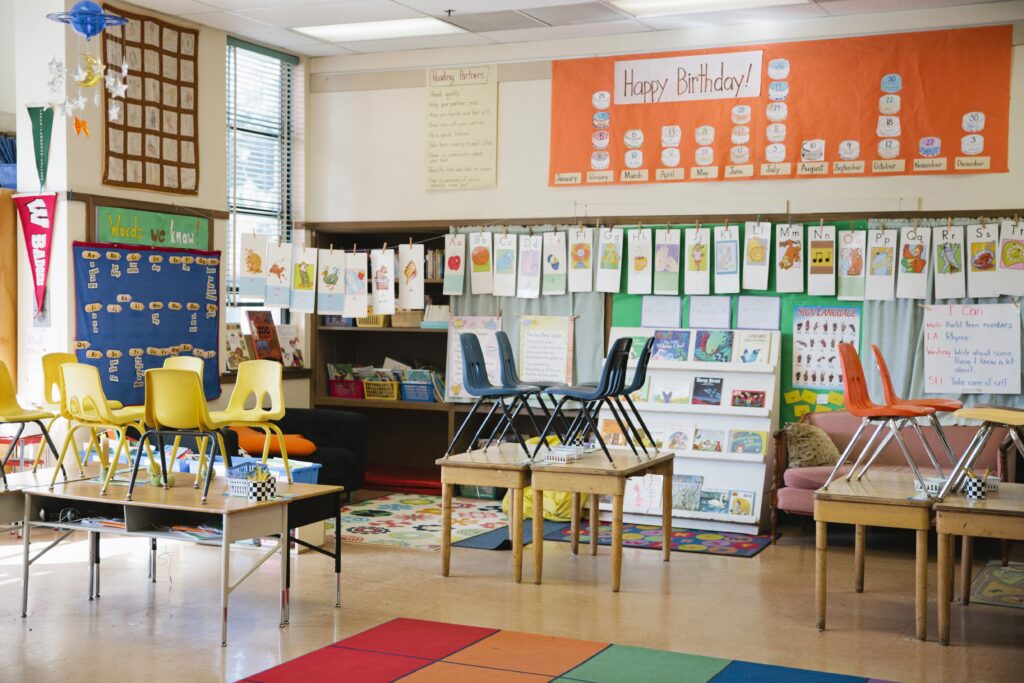
Credit: Alison Yin / EdSource
The article was updated on March 3 to clarify the period of the school year covered by the two interim financial reports and to include the status of West Contra Costa Unified.
Este artículo está disponible en Español. Léelo en español.
Oakland, San Francisco and Hayward have joined four smaller districts on the five-alarm fire list of the state’s most financially stressed districts — those flirting with insolvency.
They join 32 districts on a second, cautionary list where there’s smoke but no fiscal flames — yet. The second list, released last week, includes Sacramento Unified, several small rural districts where a small drop in enrollment can pose a financial threat, and two San Jose elementary districts, Alum Rock and Franklin-McKinley, which are closing multiple schools in the fall. Not on the list so far this year is West Contra Costa Unified, which is struggling to stay afloat and received a special “lack of going concern” designation the past three years.
The 39 districts combined are more than last year and four times as many as in 2022-23, when state and federal revenues overflowed. Still, the updated total accounts for only about 4% of the state’s districts.
Michael Fine, CEO of the Fiscal Crisis and Management Assistance Team, a state agency whose job is to monitor districts’ finances to prevent insolvency, blamed the financial pressures on declining enrollments and the termination of record federal Covid aid for schools.
Both factors are forcing districts to make difficult choices that will affect students. Some districts are offering retirement buyouts and/or laying off teachers, counselors and other staff because staff salaries constitute about 80% of overall costs. Many districts on the list also bear the cost of vacillation — a failure to act sooner to cut costs before deficits mount, Fine said.
“From my standpoint as an advocate of best practice, there should be nobody on the list because the two predominant factors are predictable,” Fine said. “Why weren’t they dealing with these a year ago, two years ago, and three years ago?”
Those questions are appropriate for Oakland Unified. Since pre-pandemic 2018-19, its enrollment has fallen 7% — by 2,608 students to 33,916. The district received a total of $280 million in emergency Covid relief in 2021 and 2022, but that expired on Sept. 30, 2024, as that aid did for all districts.
With many of its elementary schools housing around 300 students, Oakland Superintendent Kyla Johnson-Tramell proposed plans to close small schools, potentially saving millions of dollars, and, in December, to merge 10 elementary schools into five. The school board rejected the plans. In 2023, following a seven-day strike, the district, aiming to reduce the exodus of teachers to better-paying area districts in a high-cost region, gave teachers a 10% raise and a $5,000 one-time bonus. All of those factors have led to a mammoth $95 million deficit out of a $960 million budget.
“It didn’t feel like we had a deficit growing because we had all the one-time money,” Johnson-Trammell told The Oaklandside last week. “We have to continue to give raises. It’s not a crisis. We made investments, and we have to figure out a way to pay for it.”
California’s early warning system
Each year, between passing their annual budgets, all school districts must file two reports to FCMAT that summarize their current financial health and project ahead. Oakland and the other six most-distressed districts filed a “negative” status in their first interim report. This means they likely won’t be able to meet financial obligations, including payroll, in the current or next fiscal year. The 32 other districts filed a “qualified” status, meaning they’re on track to run out of money in the next two fiscal years.
Districts self-certify their reports. They filed their first interim report on Dec. 15, covering the four months, through Oct. 31, since the July 1 fiscal year began. The second interim report, filed March 15, covers the year through Jan. 31, enabling districts to factor in revenue estimates from the governor’s initial budget, including the projected cost-of-living increase they rely on. March 15 is also the deadline for notifying employees if they could be laid off — key evidence of how districts are dealing with a potential revenue problem.
How are negative-status districts responding?
Oakland had certified as “qualified” for 14 straight reports before filing a negative status in the latest report.
“Oakland is not a surprise; it’s been struggling,” Fine said. “It hasn’t taken the necessary corrective action that it has needed. The district adopts lots of plans and lots of documents, but then carries few of those out.”
However, last week, Oakland’s school board passed a plan to eliminate 97 positions for teachers, administrators and noncertificated jobs, including tutors, case managers and attendance monitors. More ideas are on the table.
Across the bay, San Francisco Unified has been in turmoil, reflected in the recall of two board members and the resignation of its last superintendent. It initially filed a negative financial status in 2023-24.
Last month, to resolve a $113 million deficit, equal to about 10% of the district’s budget, San Francisco’s board voted to approve preliminary layoff notices for 395 teachers, social workers and counselors, 164 teachers aides, and 278 administrators and other staff. Retirements and resignations will likely result in fewer layoffs.
Hayward wasn’t on the state’s radar for financial troubles, Fine said, but a new superintendent and chief business officer “inherited some issues and did the right thing” by self-certifying negative. “They would be an example of a district that will most likely turn the corner,” he said.
Most of the seven districts will work their way off the negative list, he said. Two that probably won’t are Plumas Unified and Weed Union Elementary, Fine said.
“We’re very, very concerned about Plumas,” Fine said. “They have already borrowed to a point they can’t pay back, and there has been some finessing of the data to make it look better than it is.” The only district in Plumas County, it has four schools, about 1,700 students and a $42 million budget.
Weed Union is an unusual case. The one-school district with a $7.5 million budget is the first in a decade to operate without an approved budget, having been rejected by the Siskiyou County Office of Education and the California Department of Education. Its problem, said Fine, is that it is overextended on a facility upgrade, and the burden of paying for it will overwhelm the district’s operating budget.
If insolvent, what then?
A district that runs out of money will get a state loan but lose its autonomy, and a state-appointed trustee will oversee the district’s operations. The district will honor existing contracts, but the trustee will have veto power over new contracts and other decisions that the school board makes. The district will bear the cost of the state’s oversight and legal fees and interest on a 20-year loan.
“It gets worse before it gets better,” Fine said. “Receivership takes away local control.” In the 34 years since the Legislature created FCMAT and the oversight process, only eight districts have needed a bailout loan. The most recent is Inglewood Unified, which received $29 million in 2012. Oakland would be the first two-timer. It’s still 18 months away from paying off the $100 million it received in 2003 and 2006.
Is this the most precarious year for districts?
Far from it. In the second interim report in 2011-12, 176 districts filed a “qualified” status and a dozen were “negative” – together, about one in five districts. Amid plummeting state revenues in the wake of the Great Recession, the state cut $6 billion and delayed payments to K-12 districts. The average district had not set aside nearly enough money in reserve for a crisis. This year, the average district has set aside 22% of its operating budget in reserve, more than three times as much.
The difference is “night and day,” said Fine. “During the Great Recession, the state made cuts to district revenues. Today, the issues are all local.”




